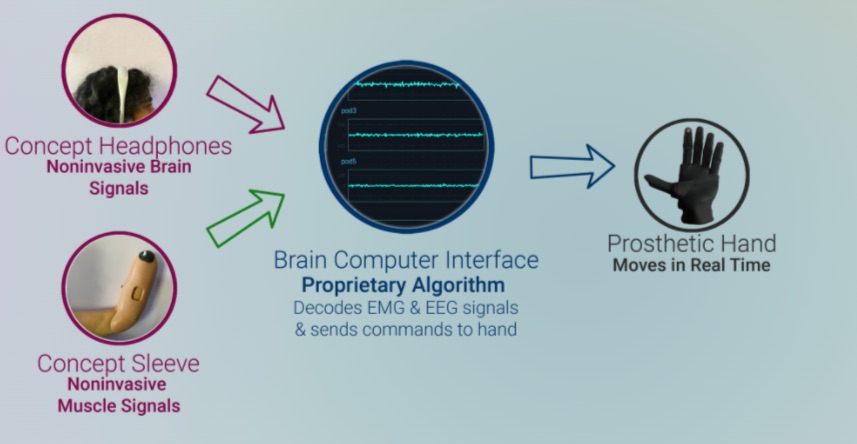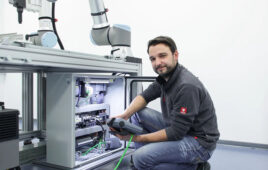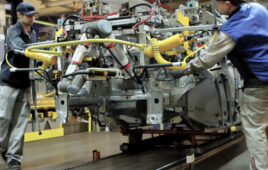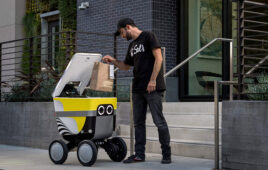|
Listen to this article
|
The ultimate purpose of robotics is to improve the human condition. Our bodies are vulnerable to damage and disrepair. In the Stanford Encyclopedia of Philosophy, the entry on “care robots” highlights the societal benefits over countering dystopian fears:
“One reason why the issue of care has come to the fore is that people have argued that we will need robots in aging societies. This argument makes problematic assumptions … Most importantly, it ignores the nature of automation, which is not simply about replacing humans, but about allowing humans to work more efficiently. It is not very clear that there really is an issue here since the discussion mostly focuses on the fear of robots de-humanising care, but the actual and foreseeable robots in care are assistive robots for classic automation of technical tasks.”
Understanding the nature of “care robots” is critical to furthering development and empowering more people with disabilities. This is the mission of ETH Zurich’s Cybathlon competition, which recently announced its third global, Olympic-style games for October 2024.
While the COVID-19 pandemic raged across the world in 2020, Cybathlon organizers persisted with their competition to use robots for medical rehabilitation. “We originally scheduled the event for May, and in March we realized we couldn’t do the event,” said Dr. Roland Sigrist, the show’s organizer. “We had three years in preparation, so we had to cancel the event in Zurich in the arena. So we decided we can’t stop the movement, we needed to give the teams the platform to show the world what they have achieved. So we decided to make a global edition, which was decentralized with teams setting up race tracks in their home locations.”
Cybathlon 2020 evolved into a livestream event. He said Cybathlon 2024 will be a hybrid event with both remote teams and live participants jostling for bot glory in Zurich. Some past Cybathlon standouts include Scewo, a Swiss-based commercial stair climbing wheelchair company, and Imperial College’s Neuromechanics Rehab and Technology lab’s robotic prosthesis. The contest has been gaining in popularity with 66 teams registered in 2016, 100 teams in 2020, and quite possibly 250 in 2024.
“We think the new approach is even more inclusive,” boasted Sigrist. He said Cybathlon 2024 will add two disciplines to address the needs of the visually impaired and severe upper and lower limb disabilities.

Brain-computer interface
One of the most promising control methodologies for roboticists aiming to develop medical therapies for quadriplegics and paraplegics is the brain-computer interface (BCI). This technology creates a communication pathway from the brain’s electrical activity to an external device, such as a robotic arm or computer. Dr. Jacques Vidal at UCLA first published his seminal work on BCI in 1973, which subsequently led to many new discoveries around repairing cognitive and sensory-motor function.
Vini Tripathii is founder of Invictus BCI, a startup focused on developing a more functional prosthetic hand. She hopes to compete at the Cybathlon 2024 with her BCI-enabled prosthesis.
“Three years ago, a family member got very sick. It got so bad that doctors had to amputate her hand so that she could live. After the amputation, I thought that once she got a prosthetic, it would fix everything – but it didn’t,” she said. “In fact, even after getting a premium state-of-the-art prosthetic, she found herself struggling with even simple, mundane tasks. After speaking with other amputees and clinicians, I realized these were problems shared by millions of people, and that they were inherent in the prosthetic control system. I started researching alternative methods that could provide more intuitive and functional control.”
The BCI entrepreneur recently joined NYU Stern’s Endless Frontier Labs to begin the steps to commercialize her invention.
BCI market scope
The current BCI market is estimated to be close to $2 billion and is estimated to double by 2026. The interest in mastering the cranium has lured the Department of Defense, IBM, and even Elon Musk in pushing the envelope of possibilities.
Musk’s startup, Neuralink, is building brain implants to directly connect cerebral cortexes to computers. Earlier this month at The Wall Street Journal’s CEO Summit, Musk bragged about his groundbreaking investment.
“Neuralink’s working well in monkeys, and we’re actually doing just a lot of testing and just confirming that it’s very safe and reliable, and the Neuralink device can be removed safely. We hope to have this in our first humans, which will be people that have severe spinal-cord injuries like tetraplegics, quadriplegics, next year, pending FDA approval.”
According CB Insights, other companies to watch in the space include Kernel, Dreem, Thync, Halo Neuroscience, Synchron, BrainCo, Neurable, Flow Neuroscience, Cognixion, Bitbrain Technologies, Paradromics, MELTIN MMI, Neuros Medical, NextMind, Emotiv, Q30 Innovations, BIOS, NeuroScouting, NeuroPace, and Leonardo DiCaprio’s MindMaze.

While the market for BCI is all-encompassing with recreational consumer products and psychological therapies, the greatest promise offers the ability of connecting robotic parts to compensate for human frailties.
“The problem lies not in the mechanics of the prosthetic hand, but the prosthetic control interface,” said Tripathii. “Current prosthetic control systems are frustrating for amputees to use as they are unintuitive, capable of only a few grasps and have unreliable performance.”
This personal journey led the Cornell scientist to BCI as the solution. “In essence, a BCI decodes neural activity and translates it into an external command: this can be used in a variety of applications, including assistive technology. The BCI decodes the received signals into a hand movement, then passes instructions for the prosthetic hand to perform that hand movement.”
Cybathlon 2024
Tripathii’s company is on the cusp of developing its first prototype complete with mechanical phalanges for a growing list of potential users. Tripathii hopes to showcase its proprietary robotic hand at Cybathlon 2024.
“Cybathlon is a unique opportunity to really test BCI performance in myriad day-to-day activities.” She continued, “Most importantly, it is a forum where indomitable human spirit partners with human ingenuity to say that we can and we shall not be limited by any constraints. We are very excited to be joining in 2024.”
This sentiment aligns well with the vision of Sigrist, who calls the conference “a movement.” Tripathii professes that Cybathlon is really a catalyst for promoting technology like hers to ultimately change the paradigm of care.
“Many of the physical challenges that we currently face, whether from disabilities or old age, will become less of a challenge and more of an augmented task. BCI will transform the way we do things to make the world safer, more productive, and more accessible. It will make it possible to do work more dexterously, accelerate learning, and redefine how we create and interact with art, music and other media types.”






Tell Us What You Think!